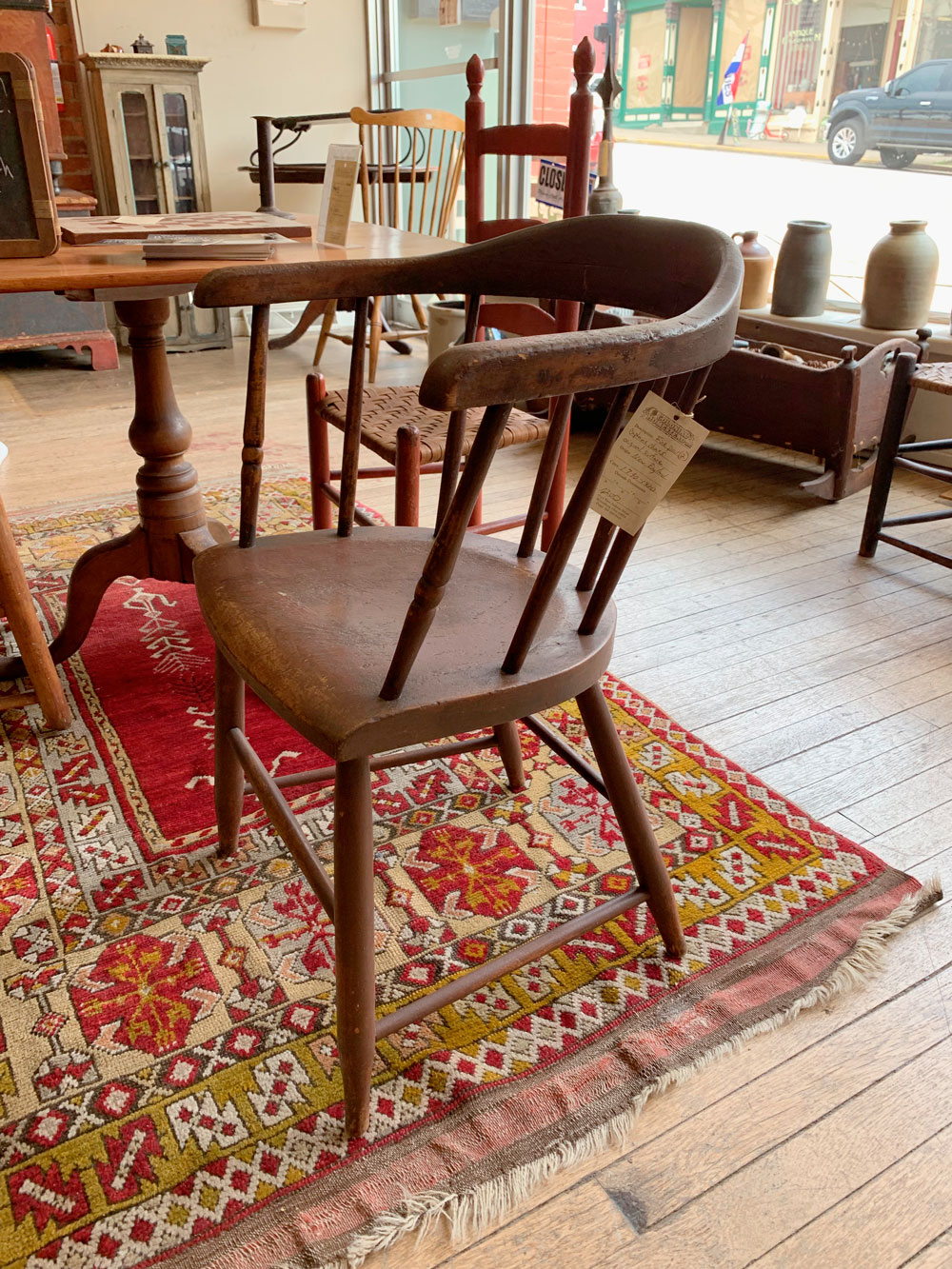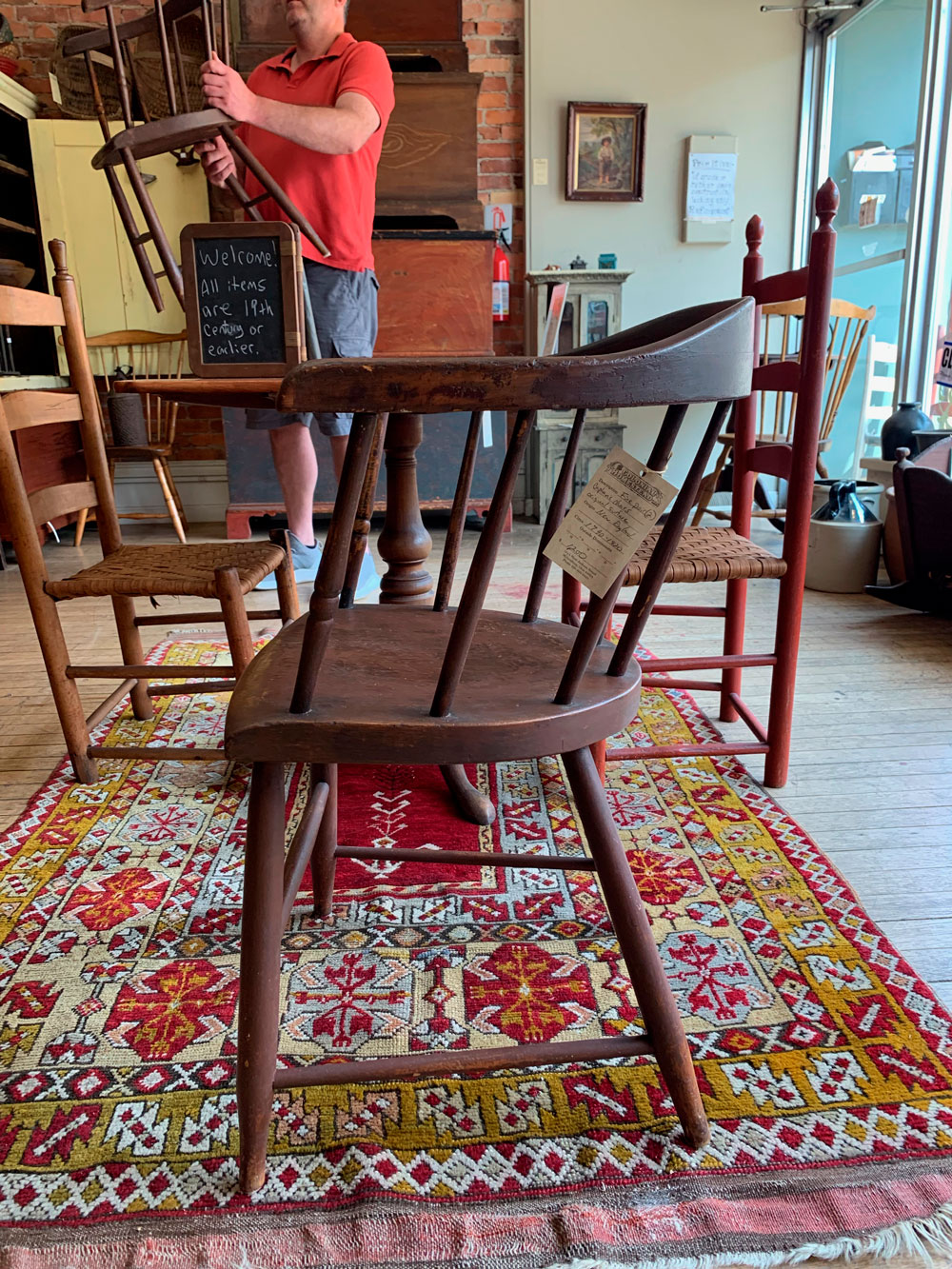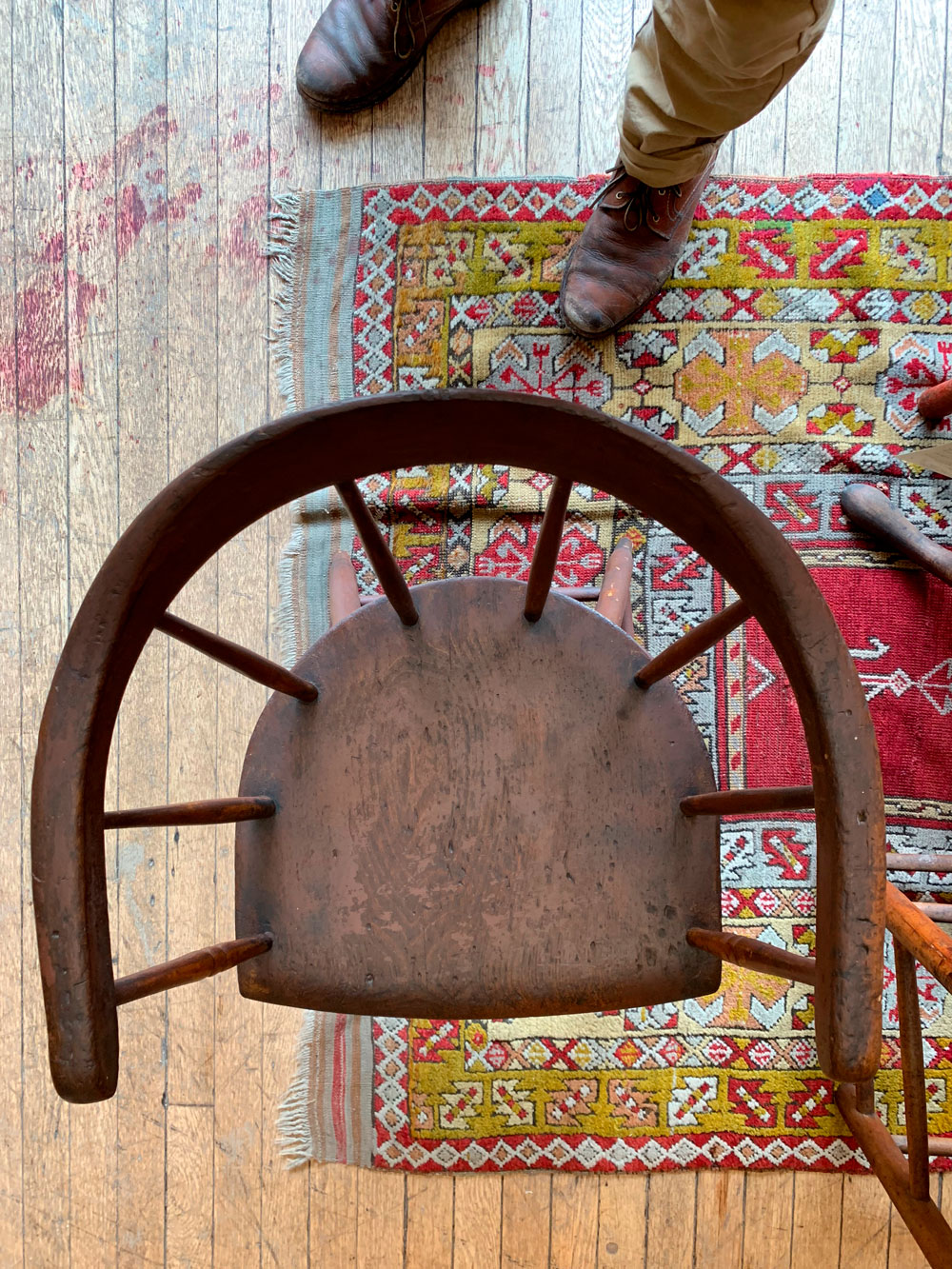I have sworn off chairmaking for a couple months as I finish up some cabinet jobs and four teaching gigs overseas. But when August rolls around, this chair and I are going to have a serious conversation.
I stumbled on a pair of them at Colonial Homestead in Millersburg, Ohio. The only information about them on the label was they were from New England and were likely made between 1790-1820.
To my eye, they look remarkably modern. I love that the rake of the spindles and legs are in opposition to each other. The armbow, of course, is also a piece of work. It’s laminated from two pieces – both steambent as far as I could tell.
While I would love to make a faithful copy of this chair, I don’t think that’s a good starting point. The seat is incredibly small. I do not have a reputation for a large posterior. In fact, several rescue parties have been dispatched to find my missing butt. My wife often jokes that when we become rich she will pay for implants for me.
But when I sat in the chair I felt like a cork in a wine bottle.
So the seat has to be a bit wider. Aside from that change, however, the chair is fairly comfortable and straightforward to build. I might omit the bead detail on the front posts. I might not. Because of the thick paint on the chair, it was impossible to determine the wood species that were used (likely pine for the seat). So I’ll just have to guess based on historical examples.
I haven’t built a low-back chair for many years. Should be fun.
But first, dovetails.
— Christopher Schwarz




A very nice chair. I must try the backwards rake of the spindles once, very striking.
Could it have been a child’s chair, with the seat being so small?
The undercarriage is also nice and low.
I kinda like the beads, it would be interesting to see beads on one of your chairs once!
Looks like a Klismos! https://en.m.wikipedia.org/wiki/Klismos
Everything looks like a Klismos! It’s the DNA for most chairs with curvy bits.
I was planning on making a similar char but a rolling office chair. A mullet of sorts.
That is a really nice chair
That is not an attractive chair to me. The opposition of the angles that you like hurts my eyes.
That rig though…
It uh,
really ties the room together
“Smokey, this is not ‘Nam. This is chairmaking, there are rules!”
Pretty sure the Dude would be an abiding anarchist.
I don’t understand how people can be bored. How do they have nothing to do? The list is so, so long.
Sure is going to be hard to say goodbye to that pair of boots!
Is it me, or is the unpainted ladderback chair on the left side of the second photo blind, stinking drunk? Maybe it’s a trick of perspective, but It looks like it’s going to pass out any second now.
To my eye, the design and structure of this chair indicates it probably was made during the 1870’s. I would like to see the evidence that it was made 50 years earlier. Just an opinion.
Hi Patrick,
I agree it looks like a later chair. Just reporting what the label said. Old newspaper reporter habit.
That is one elegant chair! I particularly like that the front legs are not raked strongly forward. If I were building it for myself I would make the back a bit more upright because of my own back issues, and I agree that the seat could be larger for modern anatomies. It is odd that there are beads on the front spindle and none elsewhere. Is the chair being inspected by someone in the background the other of the pair?
It would seem that making the seat wider and preserving the outward angle of the spindles would also mean making the armbow correspondingly wider and more oval than what appears in the third photo (top view) of the chair.
I realize this is entirely subjective given the variety of corks & bottles, but given the variety of chairs you’ve likely sat in, your “too small” is likely a good minimum gauge for readers to know as a reference. If you have a seat width or between the rails measurement to share; at least this armchair armchair designer would find it helpful.
It looks distracting. What about the dovetails? Any pictures or at the least small details that mayhaps I can also be distracted? Nice angles on the chair, it draws the eye.
my guess the size of the seat has to do with the size of people back then. A large person was 150 pounds!
I like the rake of the back, but unlike some here I don’t like the straight front legs. Now if you were to rake them back I think it would be much more pleasing to my eye.
Hello Chris, looking forward to more on this chair! A side question: You mention classes overseas; for those of us who live in Europe, is there a schedule you advertise prior to allow sign-ups or are they arranged for a specific group and not the public?
Hi Steve,
I keep a running list of classes here:
https://christophermschwarz.com/classes
I teach at Dictum just about every summer – I head there at the end of the month. I’m also teaching in London this fall. I also usually announce all my classes here on the blog.
Thanks for your interest!
Thanks, did you hear the palm hit the forehead? Who would have thought to check your website for classes……. Gonna try and work out a trip to London 🙂
Hello Chris, I look forward to seeing how you adapt this chair’s design! A side question: you mentioned overseas classes; for those of us who live in Europe, do you pre-advertise classes or are they arranged by a group specifically and not for the general public? thanks in advance,
Steve
Sorry about the duplicate! 🙂
This is an early, plain version of the factory chair popularly known as a firehouse Windsor. I’d say more like 1830-1840, undoubtedly painted when new.
Thanks Robert,
That term is new to me. Much appreciated.
I agree with Robert Trent. He has an educated eye. However, I will stick to my opinion as to its age…These designs did not go out of fashion quickly.